This is just ridiculous---tree roots!
newhostalady Z6 ON, Canada
10 years ago
Featured Answer
Sort by:Oldest
Comments (39)
Babka NorCal 9b
10 years agojosephines167 z5 ON Canada
10 years agoRelated Discussions
Digging up a peony now to replace with bare root just arrived?
Comments (10)Thank you! This seems like the safest option now. Thank you for explaining so thoroughly, I appreciate it. Yes, it is breaking dormancy. I saw leaves when it arrived a week and half ago, and they are longer now. I’ve kept it in the cool garage, but let it have some indirect light from the open garage door in the daytime. Maybe that was the wrong thing to do…? I have a holding bed that might be the best place for it. It was my vegetable garden, before the trees grew up and made it too shady for vegetables. There’s nothing in there now but a rhubarb. Any full sun it gets is brief, and I have a wooden side table I can put over it. Its much nicer amended soft soil there than any other place I could put it. Assuming it does ok there and survives, when is the best time to make the switch? Next spring? I had someone move a 4 year peony for me last spring that was in the wrong place after construction. It was just barely showing above ground. (I’d just had surgery and hired a gardener for spring clean-up). The peony didn’t miss a beat. This year it will bloom for the first time, it was in too much shade before. She made it look easy, so I don’t remember details, like how wide around the peony she dug. I really appreciate your help!...See MoreBare Root Roses just arrived - what do I do with them now?
Comments (13)Ok, I think I'm going to be fine with them. I did call Palatine because our weather is making things difficult. It rained yesterday so I was afraid the ground was going to be too wet to plant, but I left it all day and the sun was shining and I went out there a little while ago and tested it and it seems dry enough. I did start soaking them this morning at 10am, and they're still sitting in water, but I asked if I could take them out of the water and just put them back in the plastic and hold them until tomorrow and plant and they said yes. Which is what I am going to do. They also said it's also a good idea to put them in the refrigerator, as Pickering used to direct me to do. She said the reason they don't suggest it, is because most people can't really fit them in their fridge. I have the room and I may do that tonight. Our forecast also calls for rain tomorrow late and again on Monday, so I really have to hit the right moment to plant. [g] She said if the weather really interferes that much I can take the whole bundle of 3 roses that are tied together and put them in a large pot and cover them over with soil up over the roots and the grafted bud union and water them in and hold them that way while waiting to plant. Thanks for sharing your experiences, it's always good to hear that people have had good results doing them several different ways....See Morehydrangea gets plenty of sun just on the leaves and blooms - NOT root
Comments (8)Consider them a cut flower if they are kept indoors. You could cut a couple of the blooms - near the top and put them in a bowl or shallow vase to enjoy in your bedroom. The sooner you move it the better the chance it will survive. If you have a shady spot - in the afternoon - you can just move it and repot later. I keep lots of hydrangeas in plastic pots - but keep them moist and water them if they seem to wilt. Make sure that the drainage holes in the bottom of the pot are not clogged or the paper wrapper is still on. Part shade to lots of shade is better than full sun - especially for a plant that was hot house grown or sold as a house plant....See Morejust a picture of an Anaerobic root system. A dead one
Comments (9)Aaa, who says so? It's like your other td bit of information about roots needing the dark. Who says so. That the difference between knowing and experience. Knowing always goes with what's known. Until some one tries it. A weakness of a copy and paste. If any thing about the first picture you could see why the roots are a different color. It has to do with what the roots are absorbing. Your talking about "YOUR" your system force feeds plants till the sterile solution at a certain ph to get it to live a week before it kills the plant. Try not to be a fan of something till you understand something about more on the subject While I should let it go at that there are newbies There are two picture on Alex's post that show why the root colors are different The color of the first picture shows white material floating in the water. That plant roots parts were floating in the water. A simple drop or rise in ph and the plant roots starts breaking up. Dying. This method instead lets the plant set it own ph. Every plant. That's why their all in separate containers. My method allows plant to live happily for "YEARs" without changing the water,, Just adding as needed. The color of the roots is immaterial. The Avocado root picture above show the difference between Fall and Spring. You can see the new roots growing. An by the way where are your example of the different root types your talking about. I have five years worth of pictures of both raft and stone bed Aquaponic systems roots to show an none are white....See Moreken_adrian Adrian MI cold Z5
10 years agonewhostalady Z6 ON, Canada
10 years agojosephines167 z5 ON Canada
10 years agojosephines167 z5 ON Canada
10 years agoken_adrian Adrian MI cold Z5
10 years agonewhostalady Z6 ON, Canada
10 years agoJon 6a SE MA
10 years agonewhostalady Z6 ON, Canada
10 years agoleaflover76
10 years agojosephines167 z5 ON Canada
10 years agojamie81
10 years agonewhostalady Z6 ON, Canada
10 years agodon_in_colorado
10 years agosquirejohn zone4 VT
10 years agoleaflover76
10 years agoin ny zone5
10 years agonewhostalady Z6 ON, Canada
10 years agopaula_b_gardener 5b_ON
10 years agobkay2000
10 years agopaula_b_gardener 5b_ON
10 years agonewhostalady Z6 ON, Canada
10 years agopaula_b_gardener 5b_ON
10 years agobeverlymnz4
10 years agounbiddenn
10 years agoUser
10 years agopaula_b_gardener 5b_ON
10 years agonewhostalady Z6 ON, Canada
10 years agopaula_b_gardener 5b_ON
10 years agobeverlymnz4
10 years agonewhostalady Z6 ON, Canada
10 years agopaula_b_gardener 5b_ON
10 years agosquirejohn zone4 VT
10 years agobeverlymnz4
10 years agosquirejohn zone4 VT
10 years agonewhostalady Z6 ON, Canada
10 years agopaula_b_gardener 5b_ON
10 years ago
Related Stories
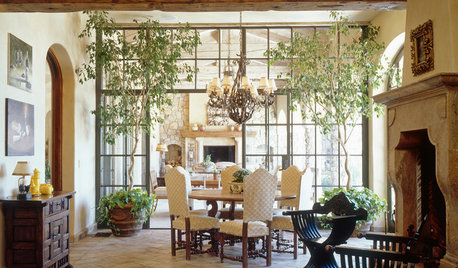
Rooting for Indoor Trees
Houseplants tend to get all the glory indoors, but trees deserve their place in the sun — and in your living room, your entryway, your ...
Full Story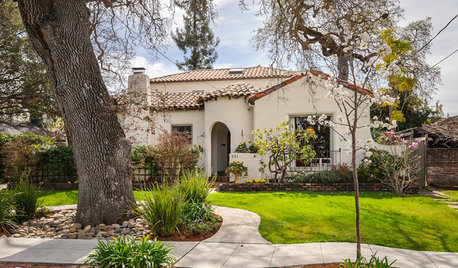
ARCHITECTURERoots of Style: Spanish Eclectic Homes Find a Place in the Sun
Flexible stucco, intricate tiles and more have kept this multicultural style going strong for a century
Full Story
GARDENING GUIDESThe Beauty of Bare-Root Plants
Plant dormant trees and shrubs in fall using the easy, affordable bare-root method and enjoy beautiful results in spring
Full Story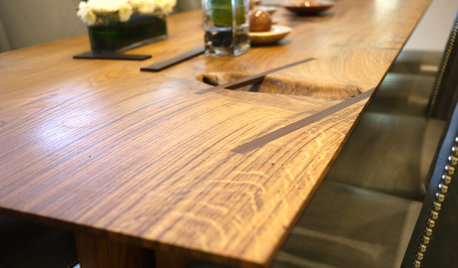
FURNITUREWood Furniture Has Root Cause
Sustainability is just the beginning with Robin Wade's lovingly made 'rustic modern' wood furnishings
Full Story
ARTThe Beauty of Bonsai — Living Art, Rooted in Harmony
Create your own emblem of nature's balance with an art form dating back 1,000 years
Full Story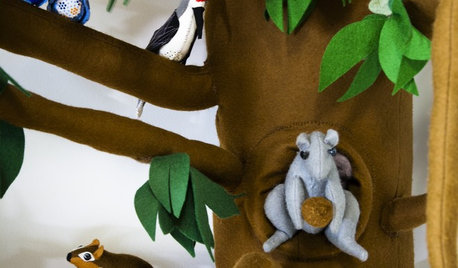
KIDS’ SPACESAn Enchanted Woodlands Playroom Roots for Imagination
Beguiling and creative, this storybook playspace in a Brooklyn brownstone is right out of a child's dream
Full Story
GARDENING GUIDESHow to Keep Your Trees Healthy
Ensure your trees’ vigor for years to come with these tips for protecting roots, watering effectively and more
Full Story
HOUZZ TOURSMy Houzz: Highlighting Farmhouse Roots in a Seattle Suburb
New and old mix with DIY touches in a remodeled 1928 home for a family of 6
Full Story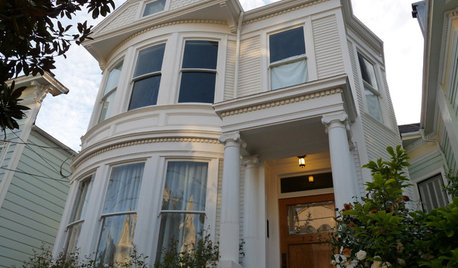
ARCHITECTURERoots of Style: Queen Anne Homes Present Regal Details
Complex facades with bay windows, multiple shingle patterns and even towers make these Victorian-era homes a sight to behold
Full Story
ARCHITECTURERoots of Style: Do You Live in a Minimalist Traditional House?
Cottages, bungalows, farmhouses ... whatever you call them, houses in this style share several characteristics. See how many your house has
Full Story



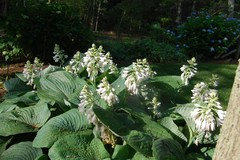
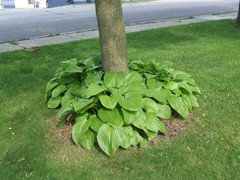

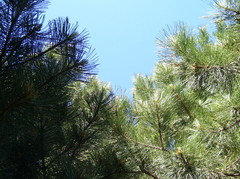

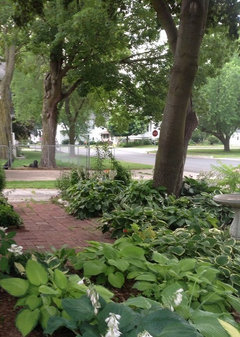

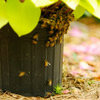
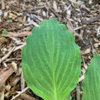

newhostalady Z6 ON, CanadaOriginal Author